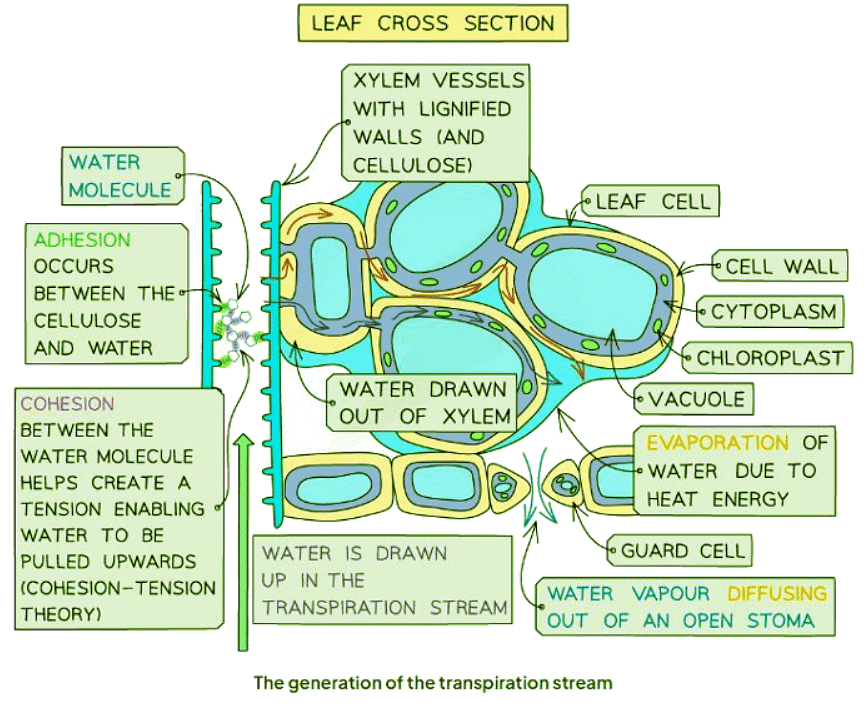Class 10 Exam > Class 10 Notes > Biology for GCSE/IGCSE > Transpiration Stream
Transpiration Stream | Biology for GCSE/IGCSE - Class 10 PDF Download
Water Vapour Loss: Extended
- Evaporation occurs from the surfaces of spongy mesophyll cells.
- The numerous interconnecting air spaces between these cells and the stomata result in a substantial surface area.
- This leads to rapid evaporation when the stomata are open.
Transpiration Stream: Extended
- Cohesion among water molecules generates a cohesive column, facilitating water movement up the plant.
- Water is transported through xylem vessels in a continuous stream, propelled from roots to leaves through the stem.
- Transpiration generates tension, exerting a pull on water within xylem vessels originating from the leaves.
- Cohesive forces between water molecules contribute to this pull, allowing water to ascend within the plant.
- Accelerated transpiration rates from leaves result in a swifter ascent of water molecules through xylem vessels.

Question for Transpiration StreamTry yourself: How does the structure of spongy mesophyll cells contribute to water vapor loss?View Solution
The document Transpiration Stream | Biology for GCSE/IGCSE - Class 10 is a part of the Class 10 Course Biology for GCSE/IGCSE.
All you need of Class 10 at this link: Class 10
|
101 videos|193 docs|33 tests
|
FAQs on Transpiration Stream - Biology for GCSE/IGCSE - Class 10
| 1. What is transpiration stream in plants? |  |
Ans. The transpiration stream in plants refers to the movement of water from the roots, through the xylem vessels, and eventually out through the stomata in the leaves.
| 2. How does transpiration help plants? |  |
Ans. Transpiration helps plants by facilitating the uptake of water and essential nutrients from the soil, maintaining turgidity in cells, and cooling the plant through the process of evaporation.
| 3. What factors affect the rate of transpiration in plants? |  |
Ans. Factors that affect the rate of transpiration in plants include temperature, humidity, wind speed, light intensity, and the availability of water in the soil.
| 4. How does water loss through transpiration benefit the plant? |  |
Ans. Water loss through transpiration benefits the plant by creating a negative pressure in the xylem vessels, which helps in the upward movement of water and nutrients from the roots to the leaves.
| 5. How can plants regulate transpiration to prevent excessive water loss? |  |
Ans. Plants can regulate transpiration by closing their stomata during hot and dry conditions, reducing the surface area of leaves, developing thick cuticles, and storing water in specialized tissues.
Related Searches




















